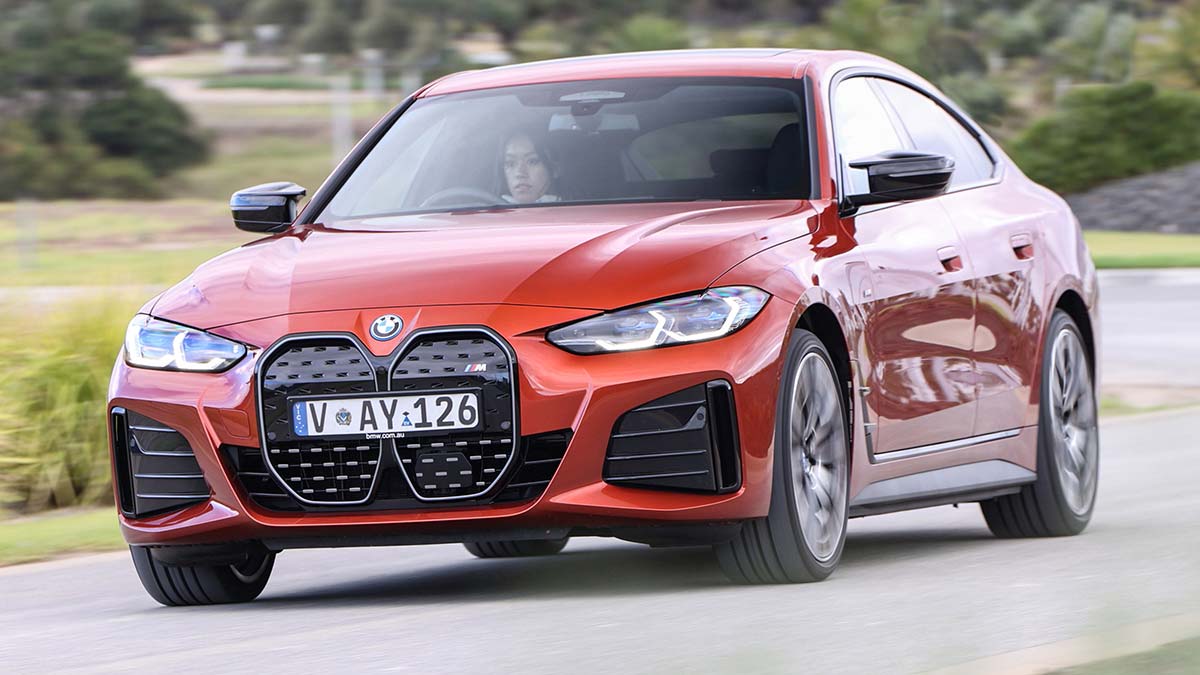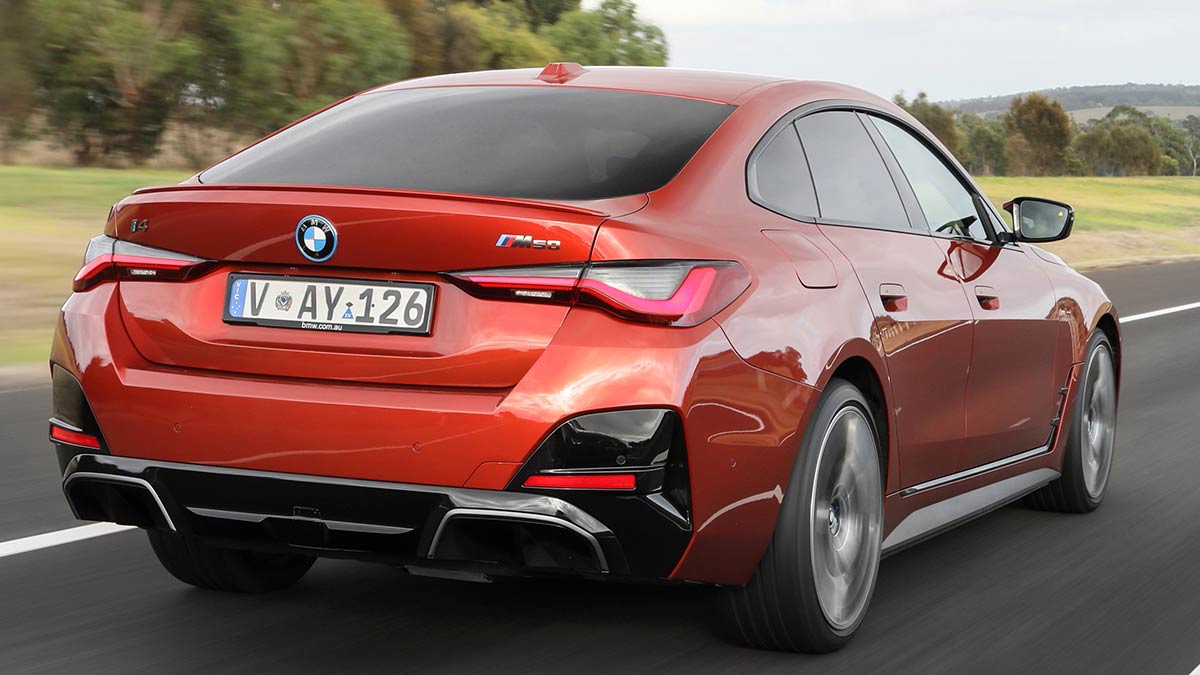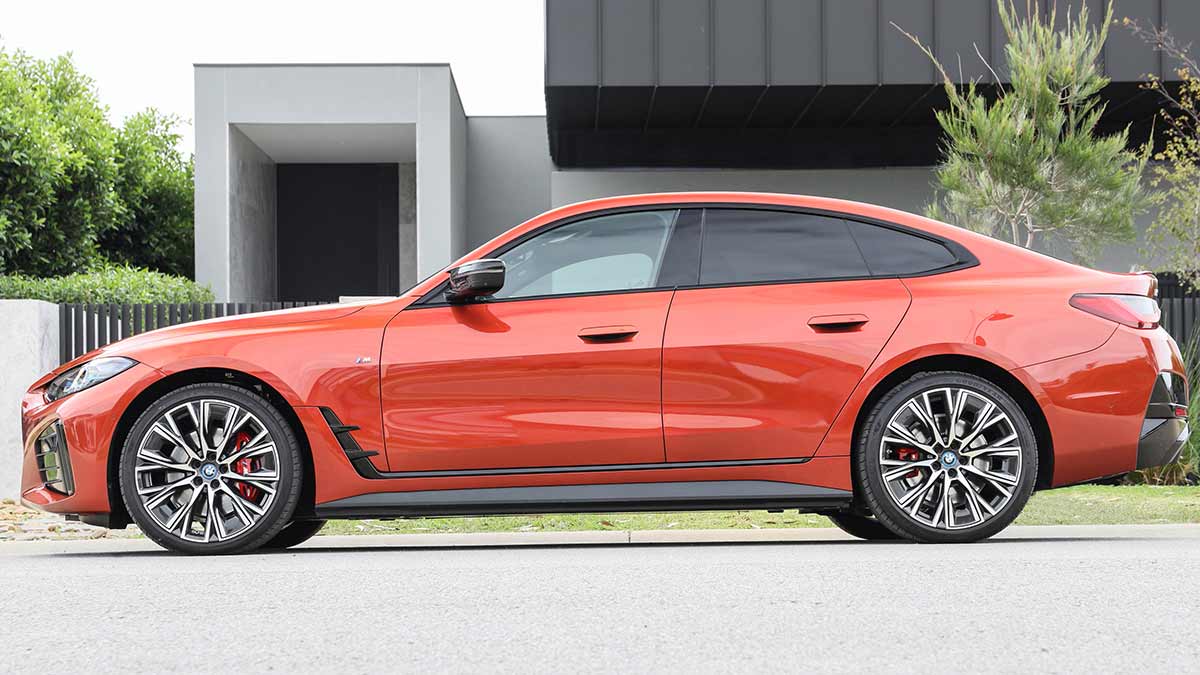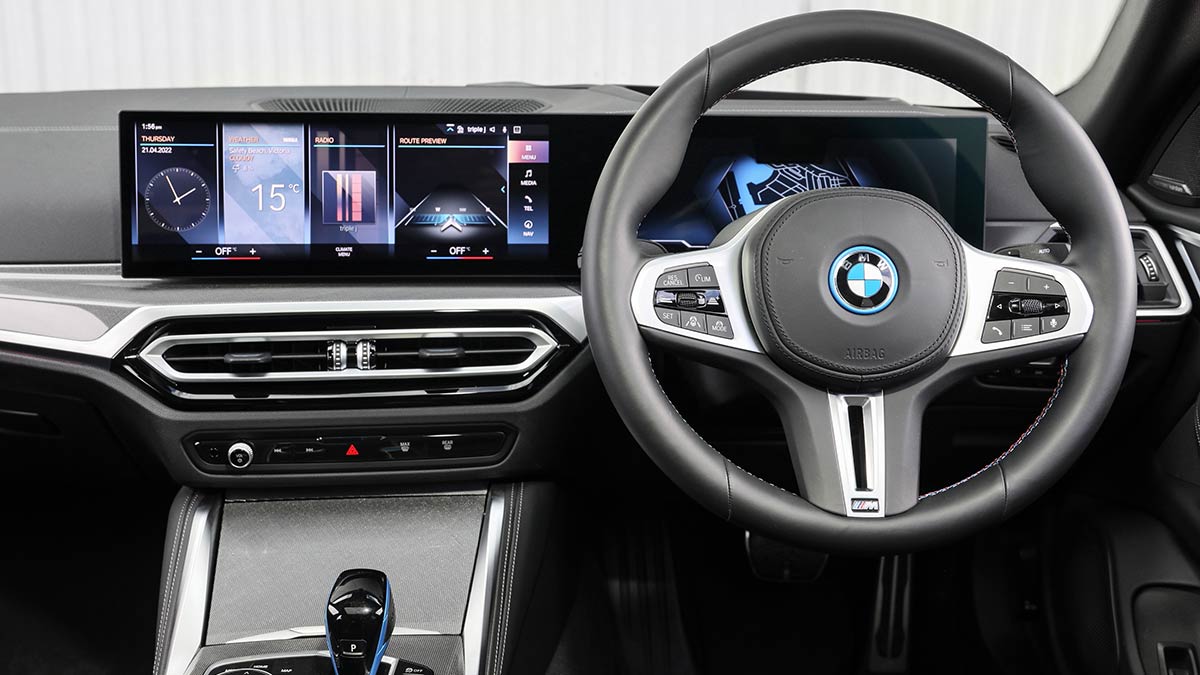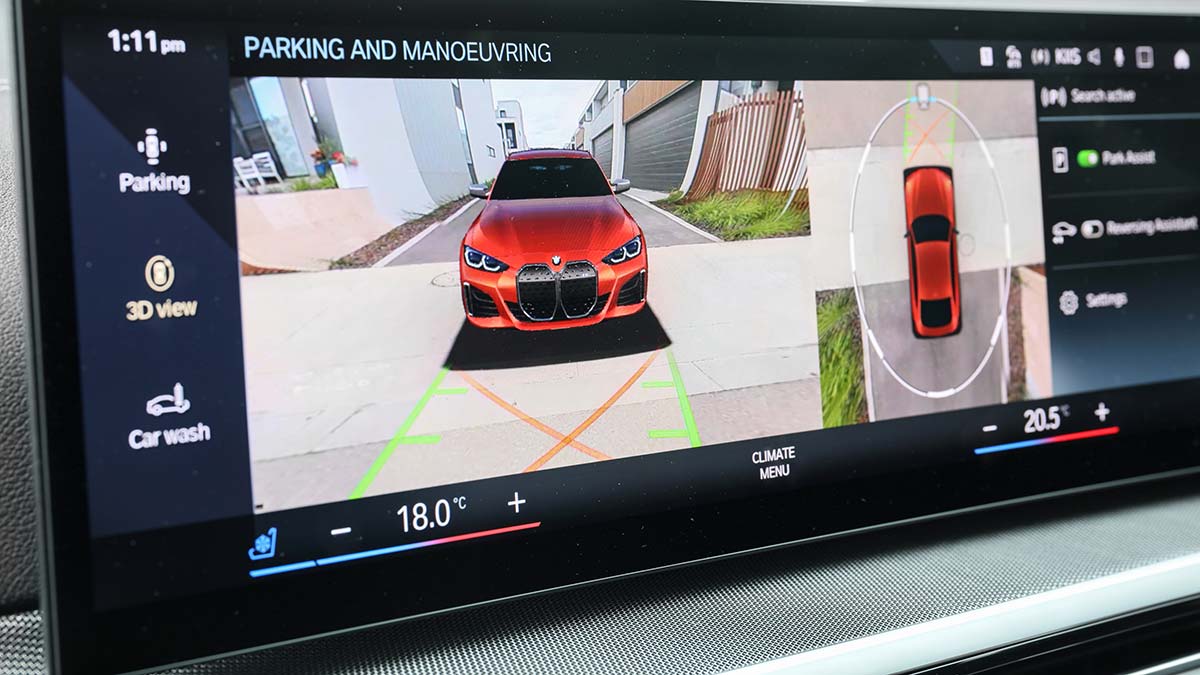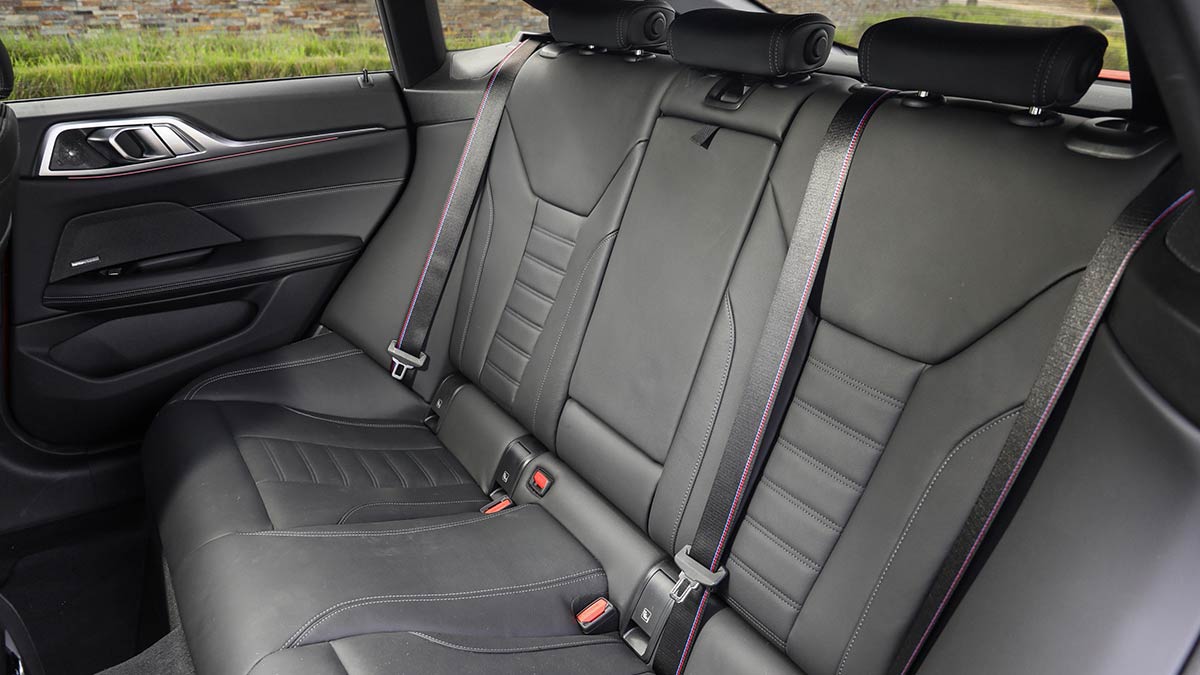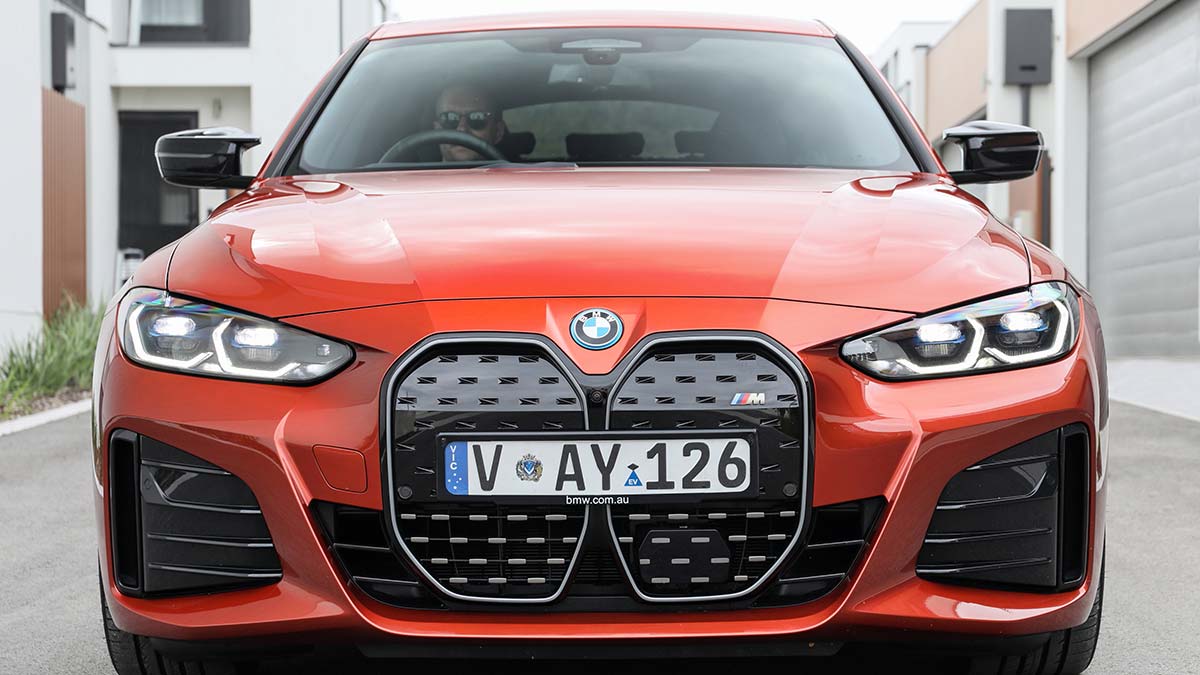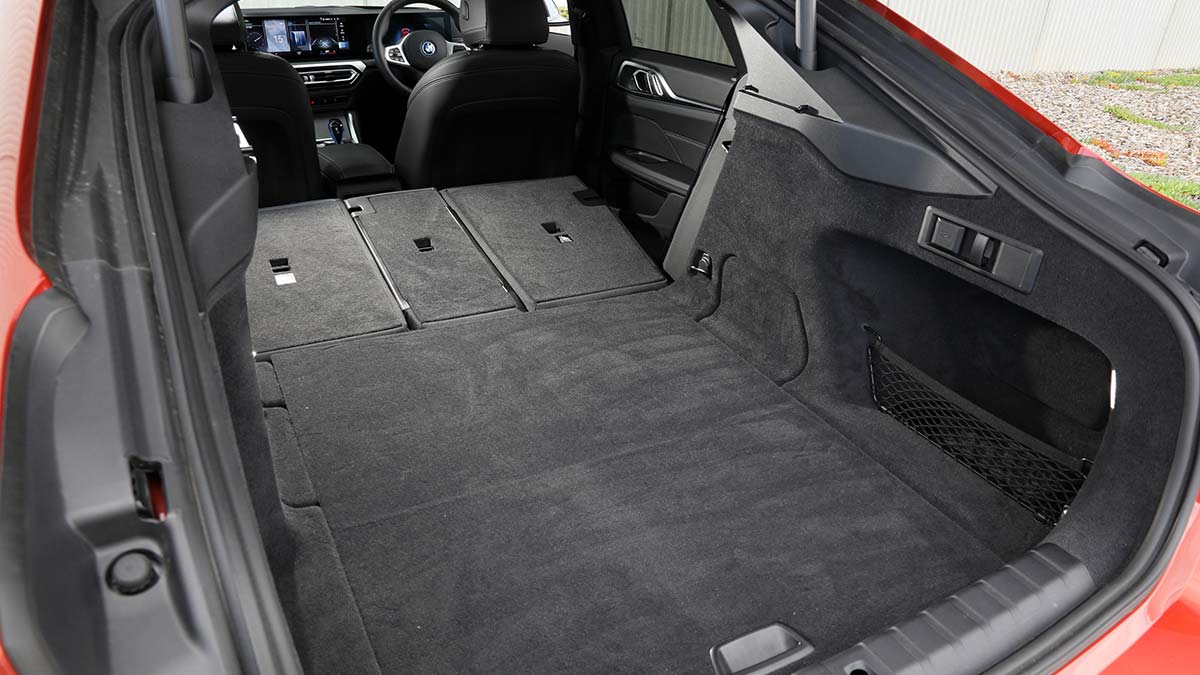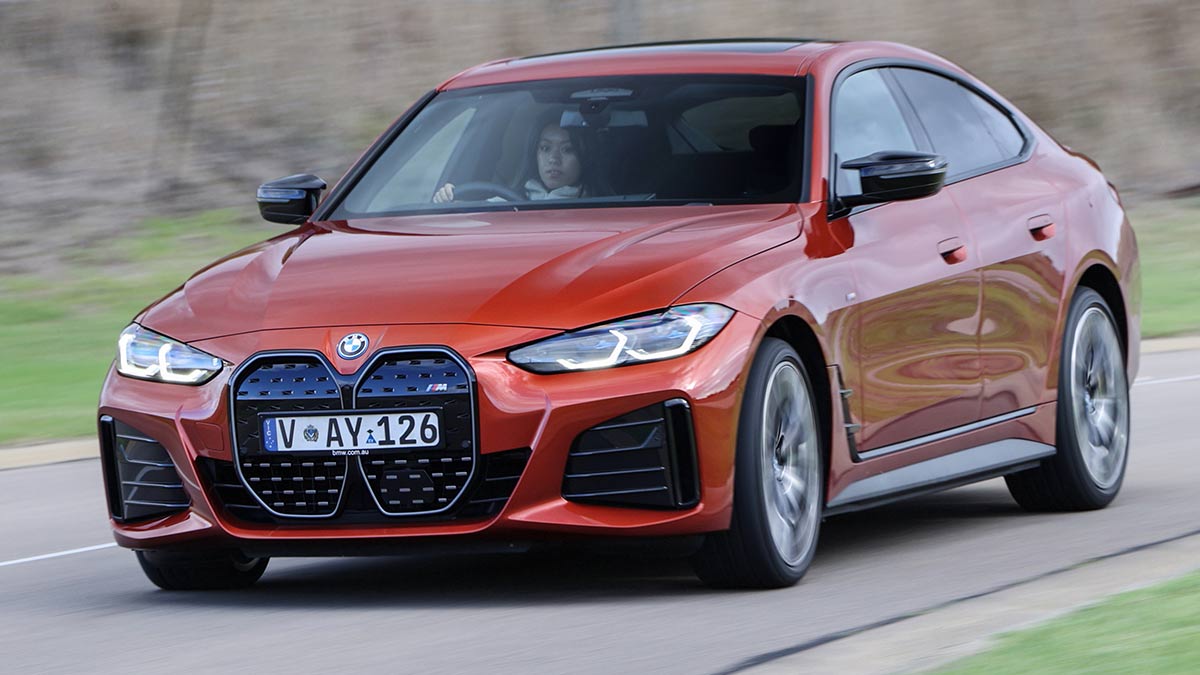The ninth-generation Toyota HiLux has arrived, bringing with it a futuristic forward exterior design, more safety and tech and the same rugged capability owners love. Will the updates tempt private buyers away from the Ford Ranger or are they just enough to keep fleets onside?
A gran approach to EVs: 2022 BMW i4 road test review

BMW’s i4 adopts the regular 4 Series platform to deliver an EV that combines fuel-free motoring with a proven luxury look.
Anyone familiar with BMW product will feel at home in the i4 four-door sedan.
BMW has taken its conventional four-door 4 Series Gran Coupe and replaced the internal combustion components with a motor and battery.
The result is most of the features traditional BMW owners are accustomed to, with an electric drivetrain they’re not.
Yes, the i4 lacks the range and performance of some rivals, but it lacks for little when it comes to build quality, ergonomics and external appeal.
On this page
- How much does the BMW i4 cost?
- Is the BMW i4 safe?
- What's the BMW i4 like inside?
- What's powering the BMW i4?
- How does the BMW i4 drive?
- Should I buy one?
How much does the BMW i4 cost?
There are two versions of the i4 in Australia: an entry level i4 eDrive40 priced at $99,990 plus on-road costs and the i4 M50, tagged at $124,990.
The M50 has a smattering of technology missing on the eDrive40, including heated front seats, “Laserlight” headlamps, a 16-speaker Harmon/Kardon sound system and a sunroof. That doesn’t justify the extra $30,000 but the addition of a second motor and a commensurate hike in performance, does.
In terms of like-for-like comparisons, a petrol-powered BMW 430i will set buyers back $84,990, while the 440i is a $118,990 proposition. So, the premium for buying an EV version is not overly onerous, given the i4 also comes with five years’ free subscription to the ChargeFox recharging network.
Keeping an i4 on the road costs $1,240 for a pre-paid four-year deal or $1,765 for six years. Servicing a petrol-fuelled 4 Series will cost $1,800 for five years.
It’s worth remembering that BMW is the warranty outlier among the prestige brands. It has refused to follow the rest of the herd and adopt a five-year coverage, so owners technically only get three years.
Optional packs abound for both variants and can kick the price up quickly.
Any colour other than white for the eDrive40 will add $2,000 to the bill; the M50 has seven standard colours.
Is the BMW i4 safe?
The i4 has yet to be officially crash-tested. The 4 Series platform it rides on is considered a five-star vehicle by ANCAP, but the addition of half a tonne of motors and batteries will have a material impact on its deformation in the frontal crash tests.
BMW will have addressed this, so expect the i4 to earn top marks when it does hit the wall. The electric BMW iX was recently assessed and earned a high five-star safety rating.
Standard protective gear in the BMW i4 includes six airbags, autonomous emergency braking with pedestrian and cyclist detection, lane-keep assist, blind-spot monitoring and front and rear cross-traffic detection.
What’s the BMW i4 like inside?
Anything Mercedes can do; BMW wants to do better.
Benz pioneered the side-by-side screen approach and Beemer’s take on it is just as impressive. The driver’s display is a 12.3-inch high-definition panel, while the infotainment screen stretches to 14.9 inches.
They’re visually impressive, though the passenger’s view does include the brace attaching them to the dash, which detracts a touch from the premium look.
BMW’s latest version of its software system, dubbed iDrive 8.0, powers the plethora of functions. They’ll take a while to sort through, but basic functionality is easy to pick up and the rotary controller is still the best in the business and makes navigation a frustration-free operation.
The head-up display is another quality touch that provides all the information drivers need without being too distracting.
Leather upholstery is standard and the entry car uses a 10-speaker sound system, with the M50 picking up a 16-speaker Harmon/Kardon set-up.
The outboard rear seats are well cushioned and bolstered, though the sloping roof does put taller occupants in close proximity to the headliner.
One of the few areas where the i4’s compromised origins as an internal combustion-engined car can be found is the tunnel that would normally house the driveshaft. It’s redundant on the i4 and only serves to restrict legroom for whichever individual has to endure that position. It does, however, house the vents and controls for the rear air-con, along with a pair of USB ports.
Press the button to open the powered tailgate and there’s a commodious 470 litres of boot space. The 40:20:40 folding rear seat then allows longer items to be easily accommodated.
What’s powering the BMW i4?
The eDrive40 has a 250kW/430Nm electric motor turning the rear wheels, with a claimed driving range of 520km. BMW says energy usage is 22.2kWh/100km
The M50 uses dual motors to power all four wheels with a combined 350kW/730Nm, though those figures can rise to 400kW/795Nm in10-second bursts. Energy use is a claimed 25.6kWh/100km, giving a range of 465km.
The battery pack in both cases is an 84kWh lithium-ion unit with 81kWh of usable charge.
You won’t be recharging too regularly at home off a standard power point. BMW quotes seven hours off a 10-amp household connection put 100km of range into the i4. Buy the 11kW BMW Wallbox and the time drops to just under 90 minutes, providing your home supports a 16-amp supply.
Head to a ChargeFox DC recharging station (and it’s free for the first five years) an a 100km top-up will take around five minutes off an ultra-rapid charger, or around 20 minutes off a 50kW unit.
How does the BMW i4 drive?
Adaptive suspension is standard on the i4 and endows the electrified sedan with decent poise, particularly given the extra 500kg the car carries compared to its petrol siblings.
It carries that heft well around town and it’s only when chasing apexes in low-friction conditions that the extra mass is evident.
The steering wheel is too thick for those with smaller hands, but it operates with a clinical, if light, response to inputs. Just like a “real” BMW.
Acceleration in the eDrive40 is brisk at 5.7 seconds to 100km. In the M50, it is approaching ferocious at 3.9 seconds. Given a genuine M version is expected to arrive, that will be a ballistically quick vehicle.
BMW has also done an impressive job of calibrating the regenerative braking. Four levels can be dialled in using the infotainment screen and the transition to mechanical braking is hard to detect. Tick.
Should I buy one?
BMW has fused its traditional strengths of impressive interior and responsive ride with a more-than-competent electric drivetrain.
If you are in the market for a prestige sedan, the Polestar 2 is really your only other choice … and it’s not as sports-sedan quick.
If build quality and interior “premium-ness” isn’t a major determining factor, it’s definitely worth visiting Tesla.
No matter which EV you order right now, patience will be a virtue.
The information provided is general advice only. Before making any decisions please consider your own circumstances and the Product Disclosure Statement and Target Market Determinations. For copies, visit racv.com.au. As distributor, RACV Insurance Services Pty Ltd AFS Licence No. 230039 receives commission for each policy sold or renewed. Product(s) issued by Insurance Manufacturers of Australia ABN 93 004 208 084 AFS Licence No. 227678.
